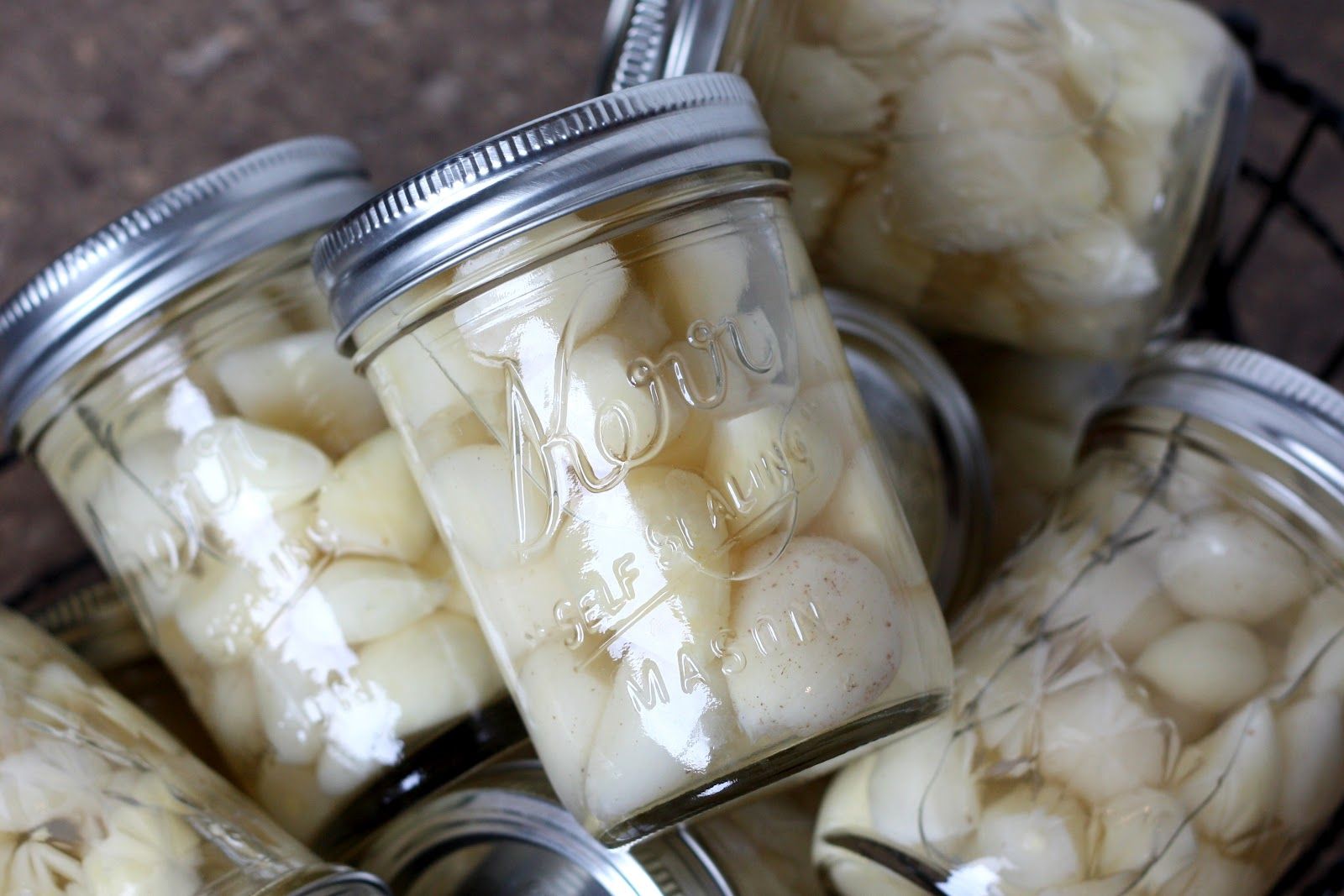

Articles
How To Store Garlic Oil
Modified: February 28, 2024
Learn the best methods and tips for storing garlic oil in this informative article. Keep your homemade garlic oil fresh and flavorful with our expert advice.
(Many of the links in this article redirect to a specific reviewed product. Your purchase of these products through affiliate links helps to generate commission for Storables.com, at no extra cost. Learn more)
Introduction
Garlic, known for its potent flavor and numerous health benefits, is a staple ingredient in many kitchens around the world. While fresh garlic is commonly used in cooking, garlic oil offers a convenient and flavorful alternative. Garlic oil is made by infusing garlic cloves in oil, resulting in a concentrated and aromatic liquid that can be used in a variety of dishes.
In addition to its culinary uses, garlic oil is also prized for its medicinal properties. It contains a compound called allicin, which is known for its antimicrobial and antioxidant properties. This makes garlic oil an excellent natural remedy for various ailments, including colds, respiratory infections, and even high blood pressure.
While it is possible to purchase garlic oil at the store, making your own at home can be a rewarding and cost-effective option. By using high-quality ingredients and following proper storage techniques, you can ensure that your homemade garlic oil retains its flavor and nutritional benefits for an extended period of time. Plus, the process of making your own garlic oil allows you to customize the flavors and experiment with different oil blends.
In this article, we will explore the benefits of garlic oil, provide step-by-step instructions on how to make it at home, discuss the various containers suitable for storing garlic oil, and share tips on preserving its freshness. We will also touch upon the safe usage of garlic oil in cooking to help you make the most of this versatile ingredient. So, let’s dive in and discover the wonders of garlic oil!
Key Takeaways:
- Elevate your dishes and well-being with homemade garlic oil. Enjoy its flavors, health benefits, and versatility in cooking while practicing proper storage and safety precautions.
- Unleash your culinary creativity with garlic oil. From sautés to dressings, explore its aromatic essence and health benefits while ensuring proper storage and usage.
Read more: How To Store Peeled Garlic In Oil
Benefits of Garlic Oil
Garlic oil offers a range of health benefits, thanks to its potent combination of vitamins, minerals, and bioactive compounds. Here are some of the key benefits of incorporating garlic oil into your diet:
1. Boosts Immunity: Garlic oil is rich in antioxidants that help strengthen the immune system and protect against common infections and illnesses. It can stimulate the production of white blood cells, which are crucial for fighting off pathogens and foreign substances in the body.
2. Heart Health: The allicin compound found in garlic oil has been shown to have a positive impact on heart health. It can help lower cholesterol levels, reduce blood pressure, and improve overall cardiovascular function, reducing the risk of heart disease.
3. Antibacterial and Antiviral Properties: Garlic oil has natural antibacterial and antiviral properties, making it a valuable ally in defending against harmful pathogens. Its antimicrobial effect can help alleviate symptoms of respiratory infections, colds, and flu.
4. Anti-Inflammatory Effects: The sulfur compounds in garlic oil have anti-inflammatory properties, helping to reduce inflammation in the body. This can be beneficial for alleviating symptoms of inflammatory conditions such as arthritis and promoting overall joint health.
5. Rich in Antioxidants: Garlic oil contains antioxidants that protect the body against oxidative stress and cellular damage caused by free radicals. This can help slow down the aging process and reduce the risk of chronic diseases such as cancer.
6. Improved Digestive Health: Garlic oil has been traditionally used to aid digestion and promote a healthy gut. It can help stimulate the secretion of digestive enzymes, improve nutrient absorption, and relieve digestive discomfort.
7. Natural Hair and Skin Care: Using garlic oil topically can promote hair growth, prevent hair loss, and improve scalp health. It also has antibacterial properties that can help treat acne and other skin conditions.
8. Weight Management: Some studies suggest that garlic oil may help with weight management by suppressing appetite and boosting metabolism. It can also aid in reducing visceral fat, which is associated with an increased risk of certain diseases.
Remember, while garlic oil offers numerous health benefits, it is important to consult with a healthcare professional before using it for therapeutic purposes, especially if you have any existing medical conditions or are on any medications.
Preparing Garlic Oil at Home
Making your own garlic oil at home is a simple and rewarding process. Not only does it allow you to control the quality of ingredients used, but it also gives you the freedom to customize the flavor according to your preference. Here is a step-by-step guide to preparing garlic oil at home:
Ingredients Needed:
- 1 cup of high-quality cooking oil (such as extra virgin olive oil, grapeseed oil, or avocado oil)
- 10-12 garlic cloves, peeled and sliced
Step-by-Step Instructions:
- Select a high-quality cooking oil to use as the base for your garlic oil. Extra virgin olive oil is a popular choice due to its mild flavor and health benefits, but you can also experiment with other oils like grapeseed oil or avocado oil.
- Wash and peel the garlic cloves, ensuring they are free from dirt or impurities.
- Slice the garlic cloves into thin slices. This helps to release the flavors and aromas of the garlic more effectively during the infusion process.
- Heat the cooking oil in a saucepan over low heat. Avoid using high heat as it may cause the oil to smoke or burn.
- Add the sliced garlic cloves to the heated oil and stir gently to ensure that all the garlic is coated in the oil.
- Allow the garlic to infuse in the oil for approximately 15-20 minutes, stirring occasionally. Be careful not to let the garlic turn brown, as this can result in a bitter taste.
- Once the infusion process is complete, remove the saucepan from the heat and let the garlic oil cool for a few minutes.
- Strain the garlic oil through a fine-mesh sieve or cheesecloth into a clean, airtight container. This will separate the oil from the garlic solids, resulting in a clear and smooth garlic oil.
Your homemade garlic oil is now ready to be used in various culinary creations. Store it in a cool, dark place away from direct sunlight to maintain its freshness and flavor.
It is worth noting that homemade garlic oil should be used within two to three weeks to ensure the best quality and avoid the risk of bacterial growth. If you notice any signs of spoilage, such as an off smell or cloudy appearance, discard the oil immediately.
Now that you know how to make garlic oil at home, let’s explore the different containers suitable for storing garlic oil and some essential tips for preserving its freshness.
Read more: How To Store Black Garlic
Ingredients Needed
To prepare garlic oil at home, you will need the following ingredients:
- 1 cup of high-quality cooking oil (such as extra virgin olive oil, grapeseed oil, or avocado oil)
- 10-12 garlic cloves, peeled and sliced
The choice of cooking oil is essential as it serves as the base for the garlic oil. Here are a few options:
- Extra Virgin Olive Oil: This oil is a popular choice for making garlic oil due to its mild flavor, health benefits, and availability. Extra virgin olive oil adds a subtle fruity note to the garlic oil.
- Grapeseed Oil: Grapeseed oil is known for its neutral taste and high smoke point, making it suitable for cooking at higher temperatures. It works well as a base oil for garlic oil, allowing the flavors of the garlic to shine.
- Avocado Oil: Avocado oil is a healthy cooking oil with a light and buttery flavor. It can be used as a base for garlic oil, imparting a unique taste to your dishes.
In addition to the cooking oil, you will need garlic cloves. Make sure to select firm, fresh garlic cloves that are free from any mold or blemishes. Peeled garlic cloves are preferred to avoid any undesirable flavors from the skin.
The quantity of garlic cloves can be adjusted according to your preference for the intensity of garlic flavor in the oil. A general guideline is to use around 10-12 cloves for 1 cup of oil. However, you can increase or decrease the amount based on your taste preferences.
Remember to always handle garlic with clean hands and ensure that the cloves are properly washed and peeled before slicing. Using fresh and high-quality ingredients will result in a more flavorful and aromatic garlic oil.
With these simple ingredients, you are well on your way to creating your own homemade garlic oil. Follow the step-by-step instructions and unleash the flavorful possibilities in your culinary creations.
Step-by-Step Instructions
Preparing garlic oil at home is a simple process that requires a few basic steps. Follow these step-by-step instructions to make your own flavorful garlic oil:
- Select a high-quality cooking oil to use as the base for your garlic oil. Popular choices include extra virgin olive oil, grapeseed oil, or avocado oil. These oils have mild flavors that complement the taste of garlic well.
- Start by washing the garlic cloves to ensure they are free from dirt and impurities. Peel the cloves and discard the outer skin.
- Using a sharp knife, slice the garlic cloves into thin pieces. Slicing the garlic helps to release its flavors and aromas when it infuses with the oil.
- In a small saucepan, heat the cooking oil over low heat. Avoid using high heat, as it can cause the oil to smoke or burn.
- Add the sliced garlic cloves to the heated oil and stir gently to ensure all the garlic is coated in the oil. The heat helps to extract the flavors and beneficial compounds from the garlic.
- Let the garlic infuse in the oil for approximately 15-20 minutes. Keep the heat low and stir occasionally to prevent the garlic from browning, which can give the oil a bitter taste.
- After the infusion time, remove the saucepan from the heat and allow the garlic oil to cool for a few minutes. This will make it easier to strain and separate the garlic solids from the oil.
- Place a fine-mesh sieve or a cheesecloth over a clean, airtight container. Pour the garlic oil through the sieve or cheesecloth to strain out the garlic solids. This will give you a clear and smooth garlic-infused oil.
- Once strained, discard the garlic solids and seal the container tightly. Store the garlic oil in a cool, dark place away from direct sunlight to preserve its flavor and freshness.
Your homemade garlic oil is now ready to be used in various culinary applications. It can be drizzled over roasted vegetables, used as a marinade for meats, added to salad dressings, or used to infuse flavor into sauces and soups.
Remember that homemade garlic oil should be used within two to three weeks to ensure its freshness and avoid the risk of bacterial growth. If you notice any signs of spoilage, such as an off smell or cloudiness, discard the oil immediately.
Now that you have mastered the art of making garlic oil at home, let’s explore the proper storage methods to ensure the longevity of your flavorful creation.
Storing Garlic Oil Properly
After preparing your homemade garlic oil, it is important to store it properly to maintain its freshness, flavor, and nutritional benefits. Here are some guidelines for storing garlic oil:
Choice of Container:
Select a clean, airtight container that is made of glass or dark-colored plastic to protect the oil from light exposure. Light can degrade the quality of the oil and affect its flavor. Avoid using containers made of reactive materials like metal, as they can interact with the oil and alter its taste.
Read more: How To Store Garlic In Freezer
Storage Conditions:
Store your garlic oil in a cool, dark place away from direct sunlight, heat, and moisture. Heat and moisture can promote the growth of bacteria, while sunlight can cause the oil to deteriorate and lose its flavor. Aim for a storage temperature around 18-24 degrees Celsius (65-75 degrees Fahrenheit).
Shelf Life:
Homemade garlic oil can generally be stored for up to two to three weeks. However, the exact shelf life may vary depending on the freshness of ingredients used and the storage conditions. Keep an eye out for any signs of spoilage, such as an off smell, cloudiness, or mold growth. If any of these signs are present, it is best to discard the oil.
Refrigeration:
While refrigeration may prolong the shelf life of garlic oil, it also has the potential to solidify the oil, impairing its texture and making it harder to use. If you choose to refrigerate your garlic oil, be sure to let it come to room temperature before using it to restore its liquid consistency.
Labeling:
Label your garlic oil container with the date of preparation to keep track of its freshness. It is also helpful to indicate the type of oil used and any additional flavors or ingredients infused with the oil.
Remember that garlic oil is a homemade product, and it does not have the same shelf stability as commercially produced oils. Therefore, it is important to practice proper hygiene and storage procedures to ensure the safety and quality of your garlic oil.
Now that you know how to store your garlic oil properly, let’s explore different containers suitable for storing garlic oil and share some essential tips for preserving its freshness.
Read more: How To Store Unpeeled Garlic
Various Containers for Storing Garlic Oil
Choosing the right container for storing your homemade garlic oil is important to maintain its quality and freshness. Here are some options for containers suitable for storing garlic oil:
1. Glass Bottles: Glass bottles are a popular choice for storing garlic oil. They are non-reactive and do not leach any unwanted flavors into the oil. Dark-colored glass bottles, such as amber or green, provide an extra layer of protection against light exposure, which can degrade the oil. Make sure the bottle has an airtight seal to prevent oxygen from entering and oxidizing the oil.
2. Dropper Bottles: If you prefer the convenience of a dropper, consider using glass dropper bottles. These bottles come with a built-in dropper or pipette, allowing you to control the amount of oil you dispense. They are ideal for precise measurements and culinary applications that require small amounts of oil.
3. Ceramic or Stoneware Containers: Ceramic or stoneware containers can also be used to store garlic oil. These containers provide a cool and dark environment, which helps preserve the quality and flavor of the oil. Ensure that the container has a secure lid to maintain airtightness.
4. Dark-Colored Plastic Bottles: If you prefer a lightweight and portable option, dark-colored plastic bottles can be used. Look for food-grade, BPA-free plastic bottles that are specifically designed for storing oils. Opt for opaque or tinted bottles to protect the oil from light exposure.
5. Hermetically Sealed Jars: Hermetically sealed jars, such as mason jars or clamp-style jars, can be a practical choice for storing garlic oil. Ensure that the jars have rubber gaskets and airtight lids to prevent oxygen from entering and spoiling the oil. Choose dark-colored or opaque jars to shield the oil from light.
6. Oil Sprayers: Oil sprayers are excellent for portion control and evenly distributing garlic oil. Look for high-quality sprayers designed specifically for oils. Fill the sprayer with your homemade garlic oil and use it as needed for cooking or seasoning dishes.
Regardless of the container you choose, make sure it is clean, dry, and free from any residual moisture or contaminants. Properly sterilize glass containers or jars by running them through a dishwasher cycle or boiling them in water before use.
Remember to store your garlic oil containers in a cool, dark place away from direct sunlight and heat sources to maintain the oil’s flavor and quality.
Now that you have learned about various containers suitable for storing garlic oil, let’s explore some essential tips for preserving its freshness and extending its shelf life.
Tips for Preserving Garlic Oil
To ensure your homemade garlic oil stays fresh and flavorful, follow these essential tips for preserving its quality and extending its shelf life:
1. Use Fresh Ingredients: Start with fresh and high-quality ingredients, including fresh garlic cloves and a good-quality cooking oil. Using stale or low-quality ingredients can negatively impact the flavor and shelf life of the garlic oil.
2. Avoid Contamination: Ensure all utensils, containers, and surfaces used in the preparation and storage of garlic oil are clean and dry to prevent contamination. Moisture and residual food particles can promote bacterial growth, leading to spoilage.
3. Proper Infusion Time: During the infusion process, keep a close eye on the garlic and the oil to prevent the garlic from browning. Over-infusion or prolonged heating can result in a bitter taste and reduce the shelf life of the oil.
4. Store in a Cool, Dark Place: Garlic oil should be stored in a cool, dark place away from direct sunlight, heat, and moisture. Elevated temperatures and exposure to light can degrade the oil and reduce its flavor and nutritional benefits.
5. Airtight Containers: Store garlic oil in airtight containers to prevent oxygen from contact with the oil. Exposure to oxygen can lead to oxidation, which can cause the oil to become rancid and spoil quickly.
6. Date and Label: Always label your garlic oil container with the date of preparation to keep track of its freshness. Indicate the type of oil used and any additional flavors or ingredients infused in the oil. This will help you identify and use the oldest garlic oil first.
7. Use within Two to Three Weeks: Homemade garlic oil is best consumed within two to three weeks to ensure its freshness and quality. After this period, the oil may start to deteriorate and lose its flavor. Avoid making large batches that may exceed your consumption needs.
8. Keep Away from Moisture: Moisture can contribute to bacterial growth in garlic oil. Avoid using wet utensils or containers when handling the oil, and ensure that the garlic cloves are dry before slicing and infusing them into the oil.
9. Inspect for Signs of Spoilage: Regularly inspect your garlic oil for any signs of spoilage, such as an off smell, cloudiness, or mold growth. If you notice any of these signs, discard the oil immediately.
10. Avoid Contamination: Ensure not to cross-contaminate the garlic oil with other ingredients. Do not dip used utensils or contaminated food into the bottle, as this can introduce bacteria and spoil the oil.
By following these tips, you can enjoy homemade garlic oil that remains fresh, flavorful, and safe for consumption. Experiment with different oils and infusions to create unique flavor combinations and elevate your culinary creations.
Now that you know how to preserve garlic oil, let’s explore the various ways you can use it in your cooking and culinary creations.
Using Garlic Oil in Cooking
Garlic oil is a versatile ingredient that can be used in a variety of culinary applications. Its rich flavor and aromatic qualities make it a fantastic addition to many dishes. Here are some ideas on how to use garlic oil in your cooking:
1. Sautéing and Stir-Frying: Use garlic oil as a flavorful base for sautéing vegetables, meat, or seafood. Its aromatic notes will infuse into the ingredients, enhancing the overall taste of the dish.
2. Marinating: Add garlic oil to marinades for meat, poultry, or tofu. The oil will help tenderize the protein while imparting a delightful garlic flavor. Allow the ingredients to marinate for at least 30 minutes to let the flavors meld together.
3. Dressing and Marinades: Use garlic oil as a key component in homemade salad dressings and vinaigrettes. Combine it with vinegar or citrus juice, herbs, and seasonings to elevate your salads, roasted vegetables, or grilled meats.
4. Roasting and Grilling: Drizzle garlic oil over vegetables before roasting or toss them in a mixture of garlic oil and seasonings. The oil will enhance the natural flavors of the vegetables and add a delightful aroma.
5. Infusing Flavor: Use garlic oil as a flavor enhancer by drizzling it over cooked pasta, rice, or grains. The oil will add a rich garlic taste and help to moisten and season the dish.
6. Bread and Dipping: Create a flavorful dipping oil for bread by combining garlic oil with additional herbs, spices, or grated Parmesan cheese. Serve it alongside freshly baked or toasted bread for a delicious appetizer or accompaniment to a meal.
7. Pizza and Pasta: Brush garlic oil onto pizza crusts before adding toppings, or drizzle it over finished pizzas for an extra burst of flavor. Similarly, toss cooked pasta with garlic oil for a simple, yet flavorful base for a pasta dish.
8. Sauces and Soups: Add a touch of garlic oil to sauces, soups, and stews to infuse them with a savory garlic flavor. It can be used as a finishing touch or incorporated into the cooking process to enhance the overall taste of the dish.
9. Seasoning Meats and Seafood: Brush garlic oil onto grilled meats, fish, or shellfish to enhance their natural flavors. It can also be used as a finishing drizzle to add a burst of garlic and depth to the dish.
10. Stir into Mashed Potatoes: Mix a small amount of garlic oil into mashed potatoes for a unique twist on a classic dish. The garlic flavor will perfectly complement the creamy and buttery potatoes.
Remember to start with a small amount of garlic oil and adjust according to your taste preferences. You can always add more if desired. Be creative and experiment with different combinations of ingredients to create unique and delicious dishes using garlic oil.
However, it is important to note that garlic oil has a lower smoke point compared to some other cooking oils. Avoid overheating garlic oil on high heat to prevent it from smoking or burning. If you need to cook at higher temperatures, consider mixing garlic oil with a high smoke-point oil like grapeseed or avocado oil.
Now that you have explored the myriad ways to use garlic oil in your cooking, it’s important to be aware of some safety precautions when using garlic oil.
Store garlic oil in a dark, cool place to prevent oxidation and maintain its flavor. A pantry or kitchen cabinet away from direct sunlight is ideal. Avoid storing in the refrigerator, as the oil can solidify.
Safety Precautions
While garlic oil is a delicious and versatile ingredient, it’s important to be mindful of a few safety precautions to ensure that you use it safely and enjoy its benefits without any adverse effects:
1. Proper Storage and Shelf Life: As mentioned earlier, homemade garlic oil should be stored in a cool, dark place and used within two to three weeks. Discard any garlic oil that shows signs of spoilage, such as an off smell, cloudiness, or mold growth.
2. Avoid Contamination: Ensure that all utensils, containers, and surfaces used in the preparation and storage of garlic oil are clean and dry. Contamination can lead to the growth of harmful bacteria. Avoid cross-contamination by not using utensils that have touched raw meat or other potentially harmful ingredients.
3. Refrigeration and Temperature: Although refrigeration may prolong the shelf life of garlic oil, it can cause the oil to solidify. If refrigerated, allow the oil to come to room temperature before using it to restore its liquid consistency.
4. Do Not Preserve Fresh Garlic in the Oil: Keeping fresh garlic submerged in oil at room temperature can create an anaerobic environment that promotes the growth of Clostridium botulinum, a bacteria that can cause botulism. It is best to infuse the oil with garlic through the heating process and strain out the garlic solids before storage.
5. Allergic Reactions and Sensitivities: Some individuals may be allergic to garlic or have sensitivities to its components. If you are allergic to garlic, avoid consuming garlic oil or consult with a healthcare professional for guidance.
6. Dosing and Moderation: While garlic oil can offer health benefits, it is important to use it in moderation. The active compounds in garlic oil, such as allicin, can have powerful effects on the body. Consult with a healthcare professional regarding the appropriate dosage and usage, especially if you have any underlying health conditions or are taking medications.
7. Heat Safely: When using garlic oil for cooking, always be mindful of the heat. Garlic oil has a lower smoke point compared to some other cooking oils. Avoid overheating garlic oil on high heat, as it can smoke or burn.
8. Consult a Professional: If you have any concerns or questions regarding the safety or usage of garlic oil, it is best to consult a healthcare professional or a qualified nutritionist who can provide personalized advice based on your specific needs and medical history.
By following these safety precautions, you can enjoy the delicious flavors and health benefits of garlic oil while minimizing any potential risks. Always prioritize your health and well-being when incorporating any new ingredient into your diet.
Now that you have a comprehensive understanding of garlic oil, its benefits, preparation, storage, and usage, you are ready to unleash your culinary creativity and enjoy the flavorful delights that this versatile ingredient has to offer.
Let the subtle, yet robust, taste of garlic oil elevate your dishes to new heights!
Read more: How To Store Hardneck Garlic
Conclusion
Garlic oil is a wonderful addition to any kitchen, offering a range of flavors and health benefits. Whether used in cooking, marinades, dressings, or as a dipping oil, it brings a delightful touch of garlic’s distinct aroma and taste to dishes.
By preparing your own garlic oil at home, you have the opportunity to control the quality of ingredients and customize the flavor profile to suit your preferences. The process is simple and rewarding, requiring just a few basic steps and minimal equipment. With proper storage and adherence to safety precautions, you can enjoy the freshness and flavors of homemade garlic oil for up to several weeks.
Not only does garlic oil add depth and complexity to dishes, but it also offers numerous health benefits. From boosting immunity and promoting heart health to exhibiting antibacterial and anti-inflammatory properties, garlic oil is a natural remedy that supports overall well-being. However, it’s essential to practice moderation and seek professional advice regarding dosage and usage, especially for those with specific dietary considerations or medical conditions.
Remember to store your garlic oil in appropriate containers, in cool and dark conditions, away from direct sunlight, heat, and moisture. Regularly inspect the oil for any signs of spoilage and discard it if necessary.
With some creativity and experimentation in the kitchen, you can discover endless possibilities for using garlic oil in your cooking. Whether it’s adding flavor to sautés, enhancing the taste of marinades, or infusing sauces and soups with its aromatic essence, garlic oil is a versatile ingredient that can elevate your culinary creations.
However, as with any ingredient, it’s important to be mindful of potential allergens and sensitivities. If you have concerns about allergies or reactions to garlic, consult a healthcare professional for guidance.
In conclusion, homemade garlic oil is a delightful and useful addition to any kitchen. By following the steps outlined in this article and applying the necessary safety precautions, you can enjoy the flavors, versatility, and health benefits that garlic oil has to offer.
So go ahead, explore the world of garlic oil, unleash your culinary creativity, and savor the deliciousness that comes with this fragrant, flavorful ingredient.
Frequently Asked Questions about How To Store Garlic Oil
Was this page helpful?
At Storables.com, we guarantee accurate and reliable information. Our content, validated by Expert Board Contributors, is crafted following stringent Editorial Policies. We're committed to providing you with well-researched, expert-backed insights for all your informational needs.
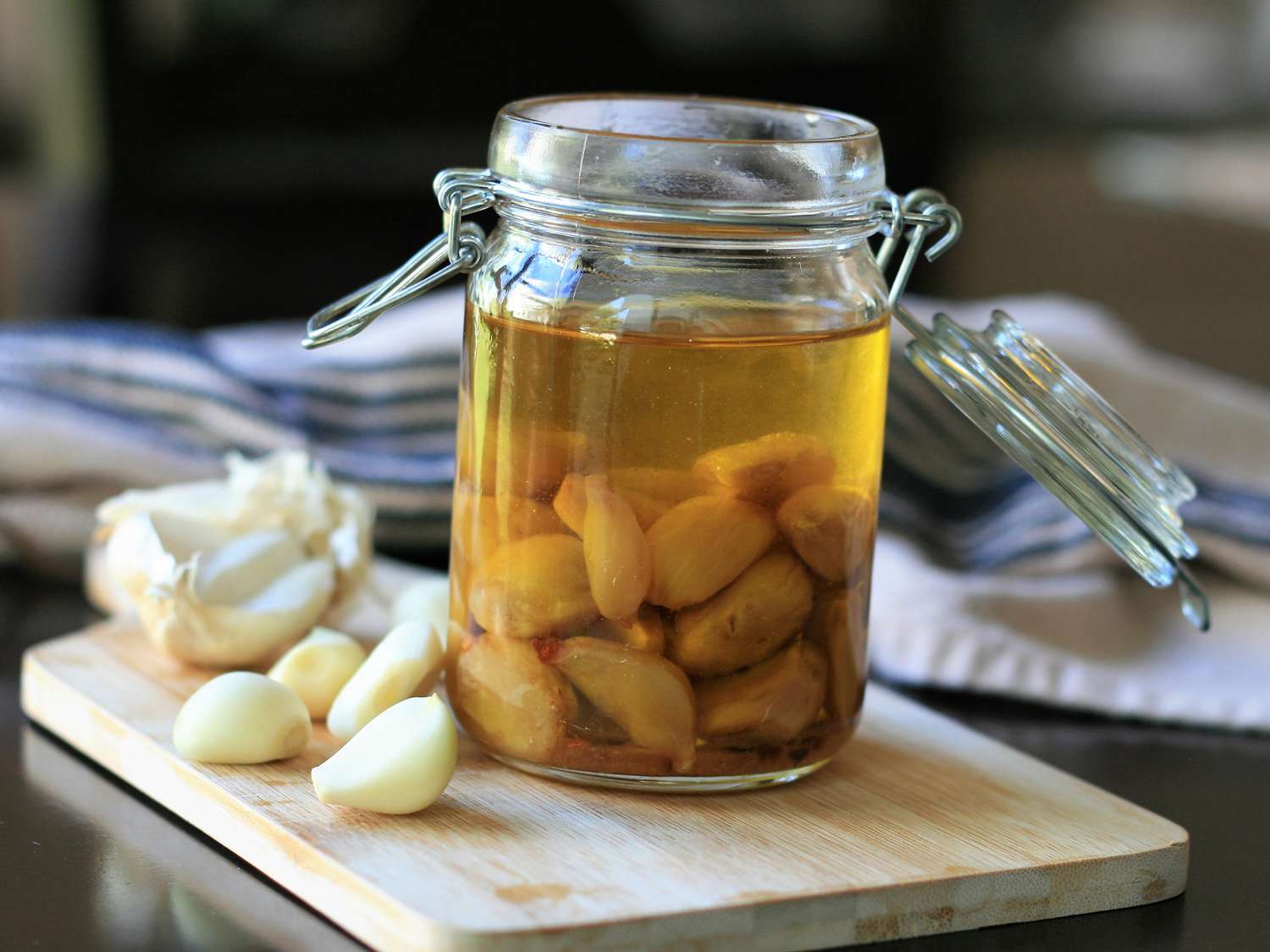
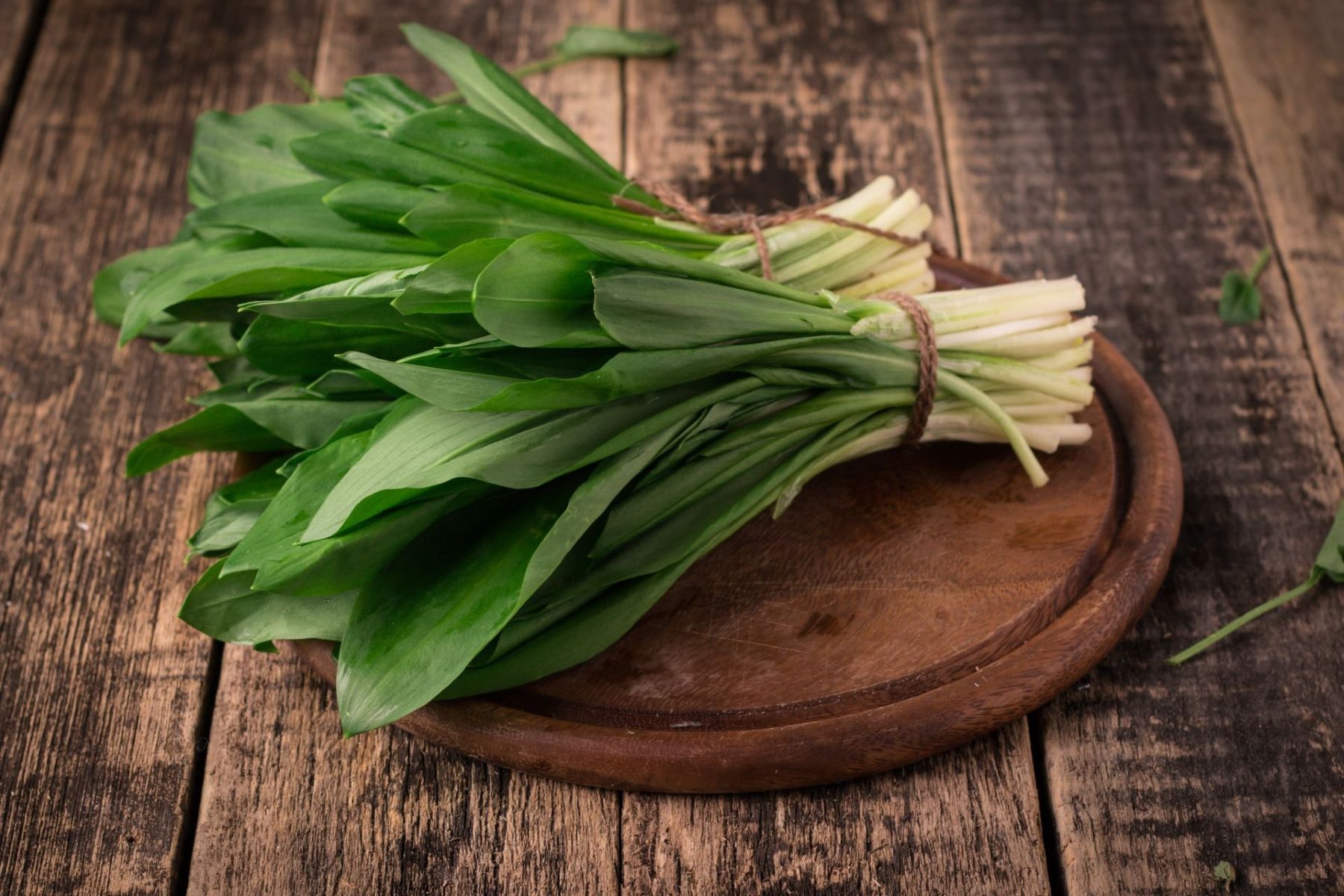

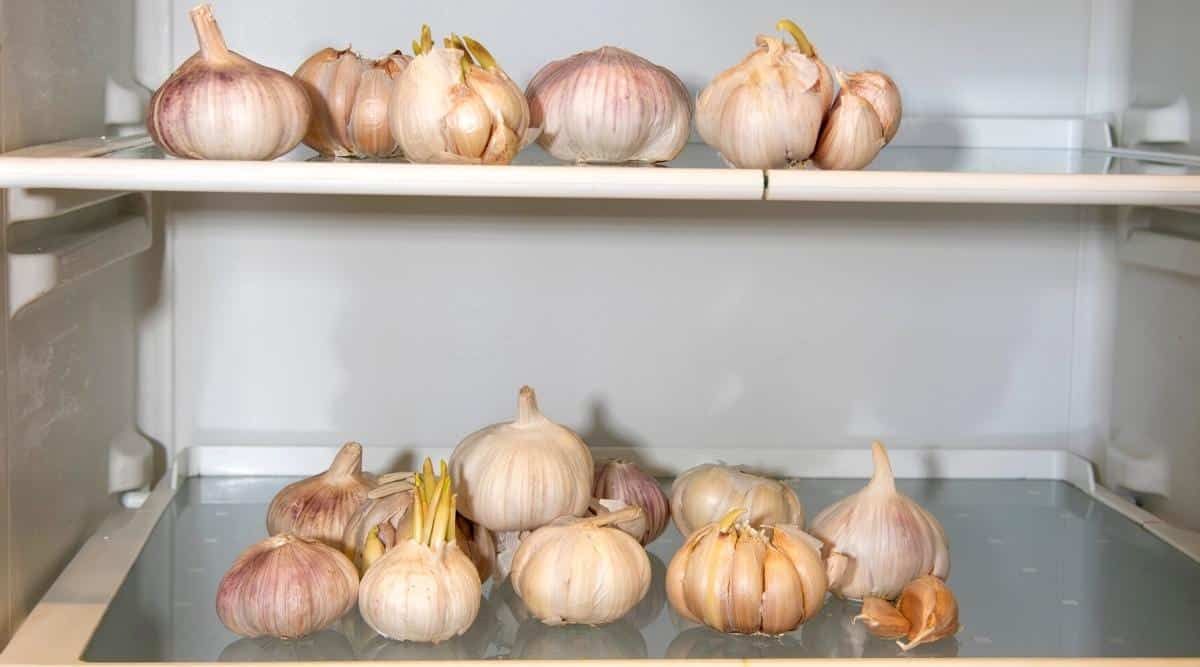
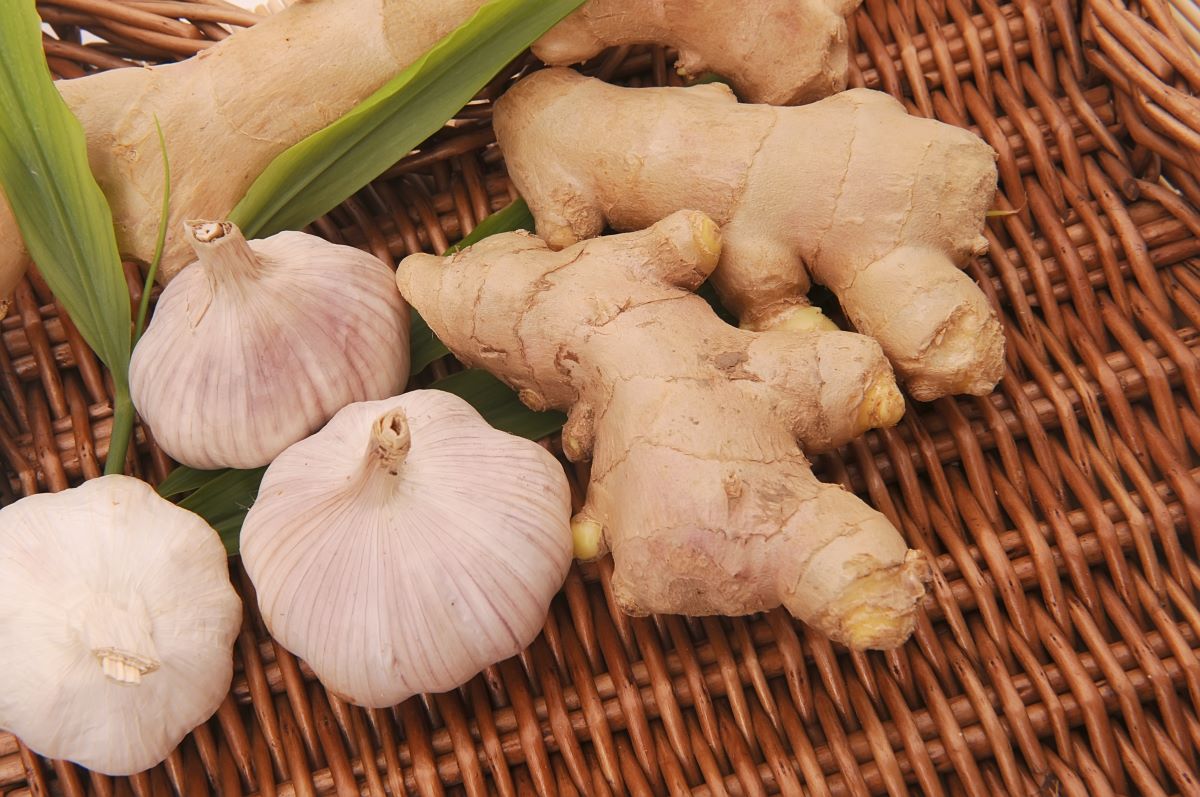
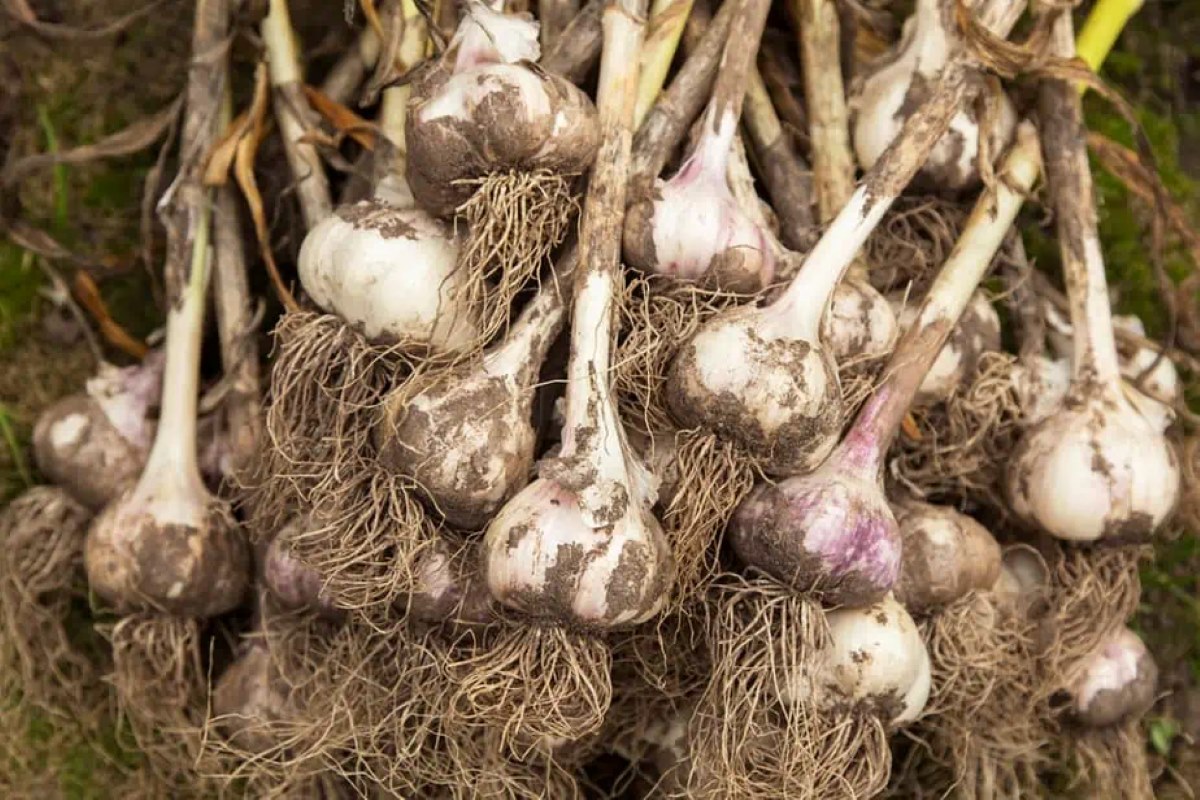

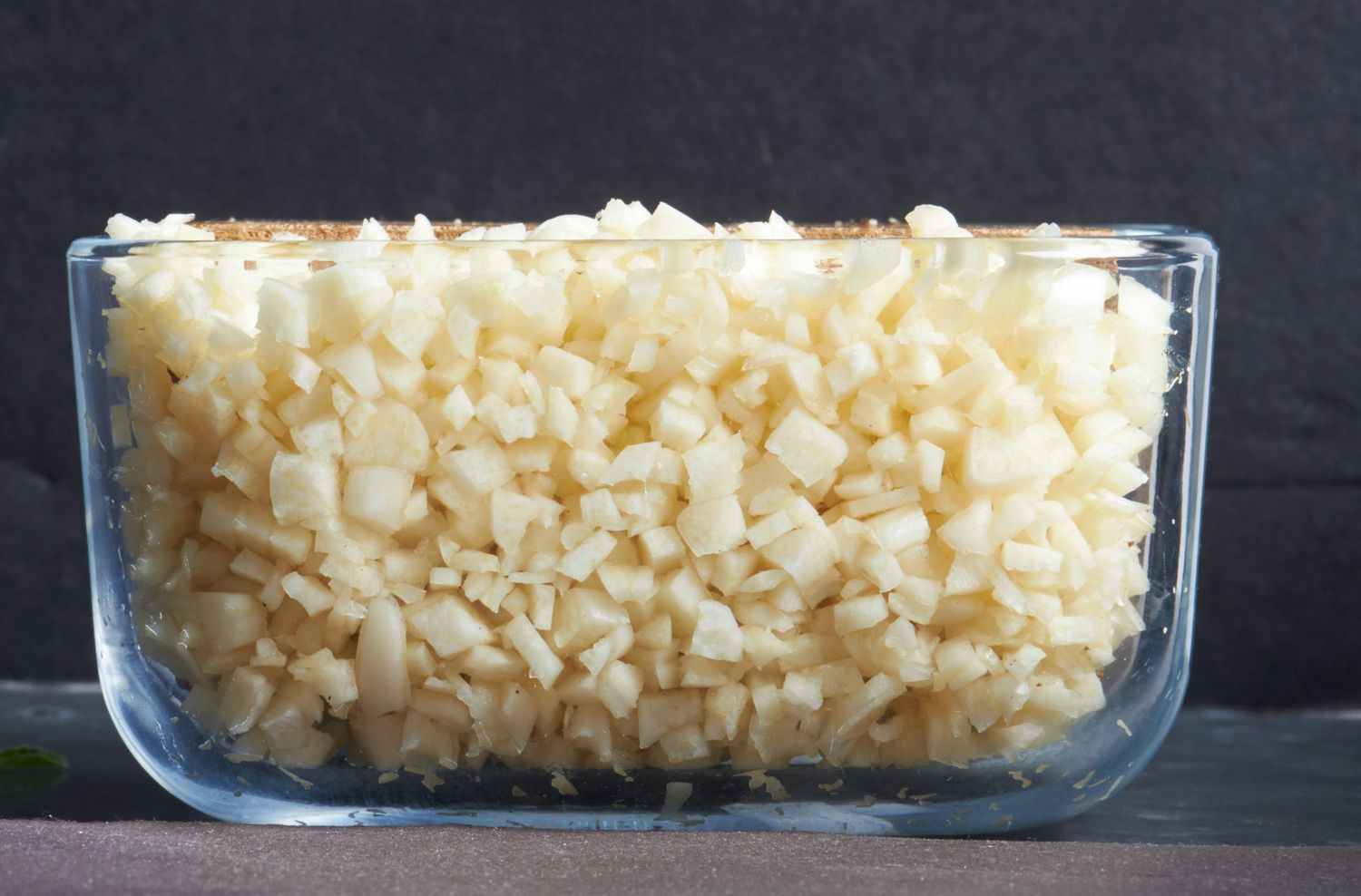
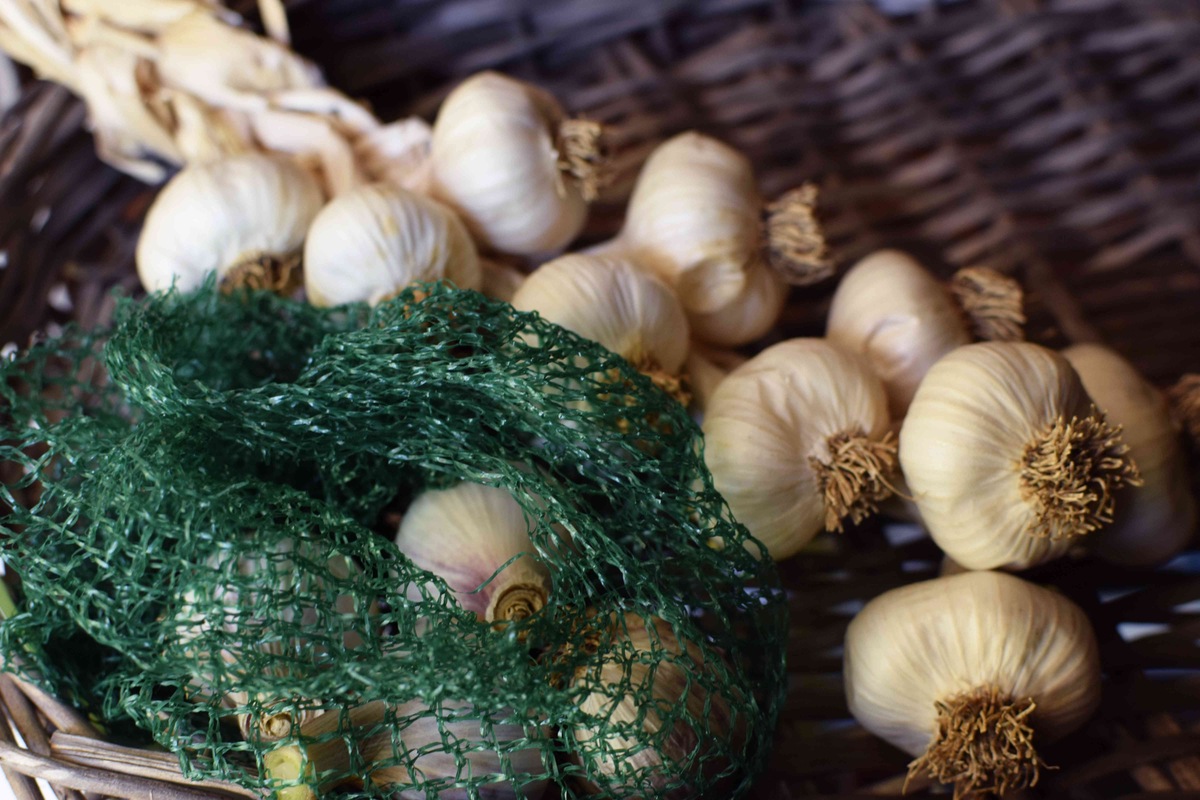
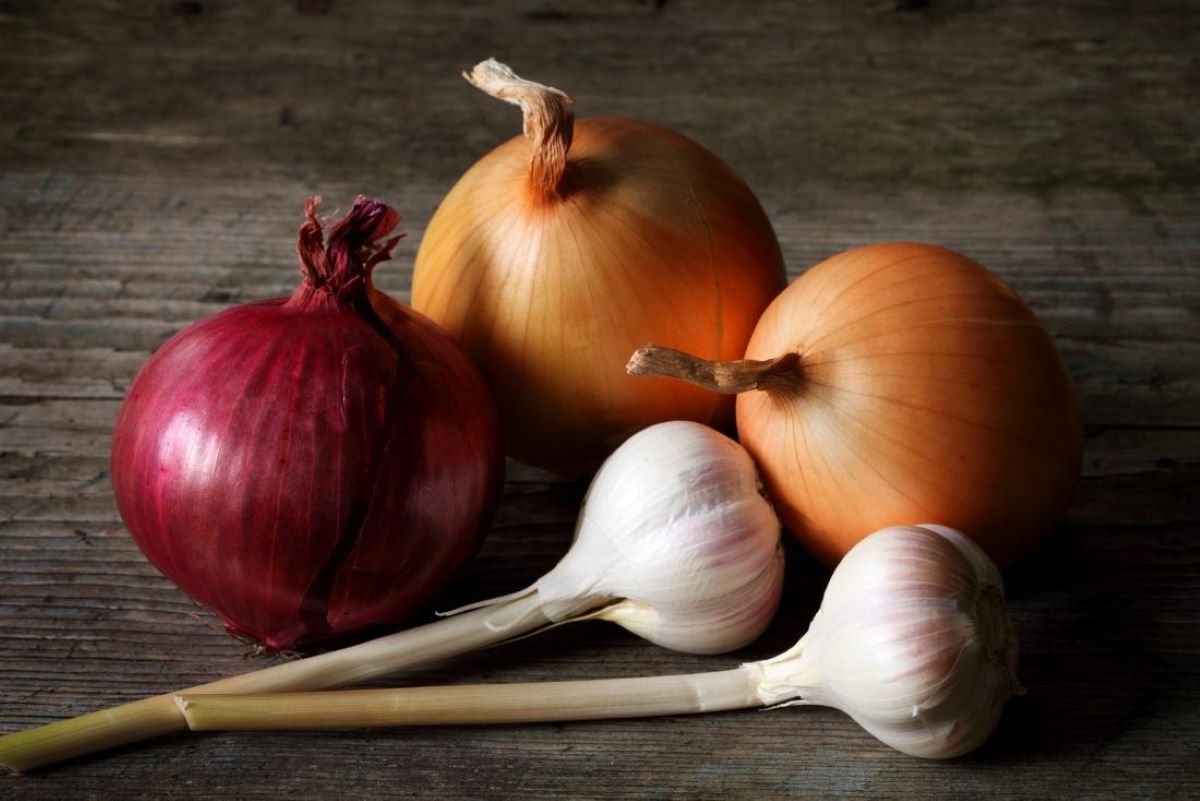
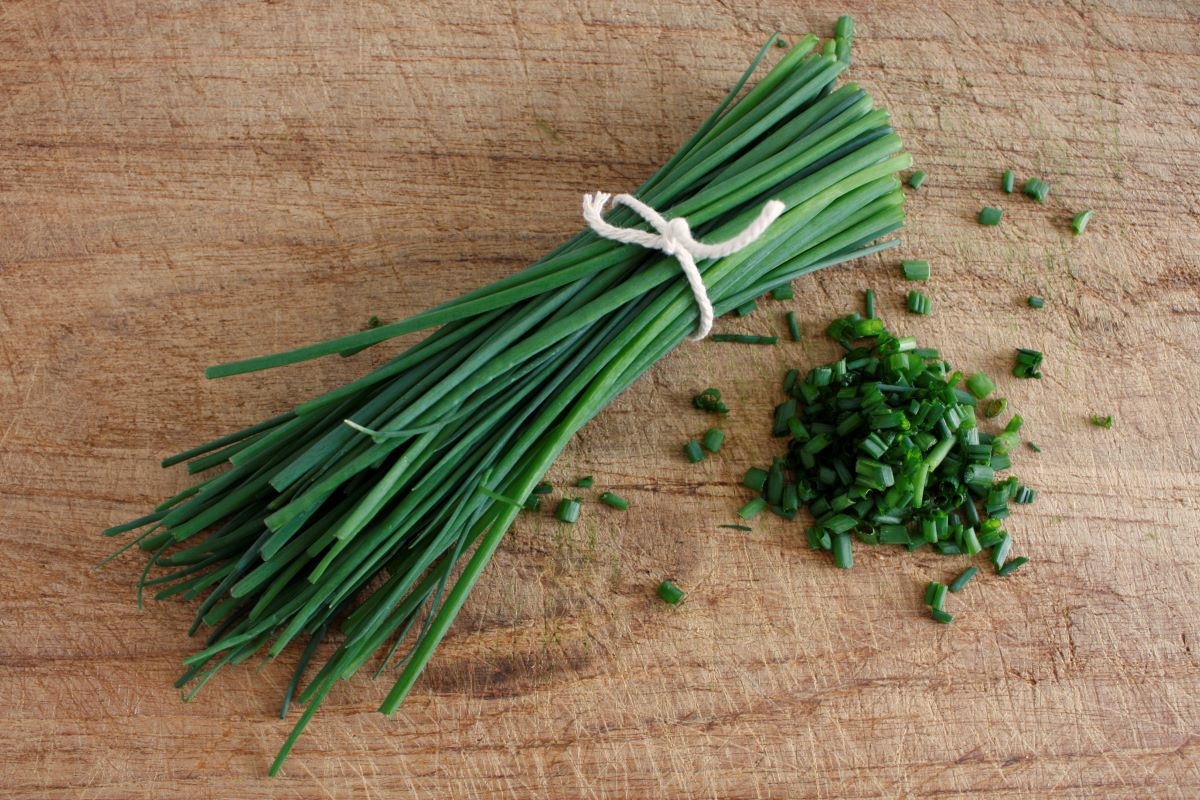

0 thoughts on “How To Store Garlic Oil”